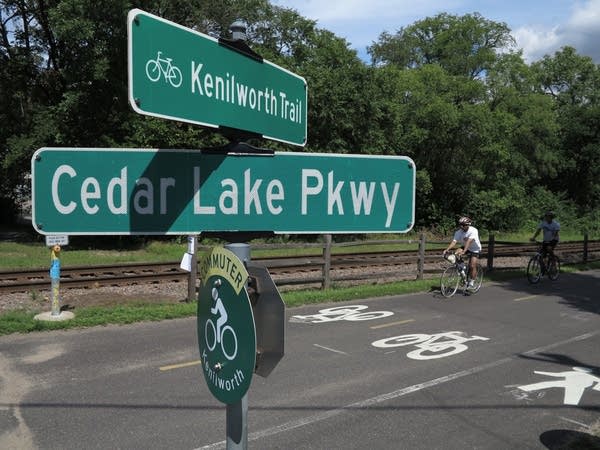Light-rail tunnel foes see water table, environmental issues
Go Deeper.
Create an account or log in to save stories.
Like this?
Thanks for liking this story! We have added it to a list of your favorite stories.

Metropolitan Council staff will discuss proposals Wednesday to build a tunnel through a section of Minneapolis for the Southwest Light Rail Transit Line.
The nearly two-mile long tunnel would run underground near two lakes and underneath a tree-lined corridor. That's raising concerns among some elected officials and city residents about possible impacts on the environment.
The Met Council has proposed three options for the new rail line to be built from downtown Minneapolis to Eden Prairie. Two options involve tunnels -- either a shallow or a deep tunnel under part of the Kenilworth corridor in southwest Minneapolis. The third option would reroute existing freight train lines in Kenilworth through St. Louis Park. Either tunnel would allow freight trains, light rail trains and biking and walking trails to all run through the same area, and eliminate the need to reroute freight trains.
The catch is that the tunnels could add between $150 million to $330 million to the cost of the project.
Turn Up Your Support
MPR News helps you turn down the noise and build shared understanding. Turn up your support for this public resource and keep trusted journalism accessible to all.
Tony Runkel, chief geologist with the Minnesota Geological Survey, said the water table in the Kenilworth corridor is not far below the surface of the ground.
"The water has to be dealt with," he said. "Either sealed off or pumped away from the site in some fashion. So that is one of the engineering obstacles or conditions they have to deal with in a site like that."
The proposed deep tunnel would sit 30 feet below the ground's surface and would reach as deep as 50 feet as it passes underneath a channel between Cedar Lake and Lake of the Isles. A properly engineered tunnel would keep water from seeping in and prevent a drop in water levels in the neighboring lakes, Runkel said.
Last week, some Minneapolis council members raised concerns about lake levels. And some said they worry that pumping groundwater out of the construction site could also lead to flooding in areas that get the displaced water.
Jim Alexander, the Met Council's design and engineering director for the Southwest Light Rail project, tried to alleviate those concerns. He told members of the transportation and public works committee that Met Council engineers have surveyed the area and created some models.
"We have determined that it doesn't look like it's going to be an issue in terms of causing any damming or any flooding of adjacent buildings during the construction or even during the permanent condition once everything's in place," he said.
Some council members remained skeptical. And others complained that the city council will have to vote on whether to grant municipal consent to the project before the Met Council receives approval from other governmental agencies to go forward with construction.
The Met Council needs to get permits from the Minnehaha Creek Watershed District and the Department of Natural Resources. Watershed district communications director Telly Mamayek, said district staff are familiar with the plans that are currently in the works, but said the Met Council will have to complete design plans before applying for the permit.
"Once we receive more specific information about this project, we will carefully analyze all the data we receive to determine the potential water quality impacts of this project so that we have an informed, science-based response to this issue," Mamayek said.
The Watershed District has the power to stop the project if the seven-member board of managers determines that the tunneling would harm the water system.
Some Minneapolis residents, like Courtney Kiernat, would like the Met Council to slow down and reconsider the route. Kiernat is a member of a group called LRT Done Right. She said the group has concerns about the environmental impact of both tunnel options, but is particularly opposed to the shallow tunnel.
"It's literally digging up all the trees, all the green space; putting in the structure of that shallow tunnel and then covering it back up," Kiernat said, adding that once the shallow tunnel is covered up, it will be hard to grow new trees to replace the ones that were taken down.
The Met Council will make a decision on which of the three options to proceed with by the end of next month.
The council could skip the tunnels and reroute freight train traffic through St. Louis Park. However, that option faces strong opposition from St. Louis Park residents and elected officials who represent the city at the local and state levels.



